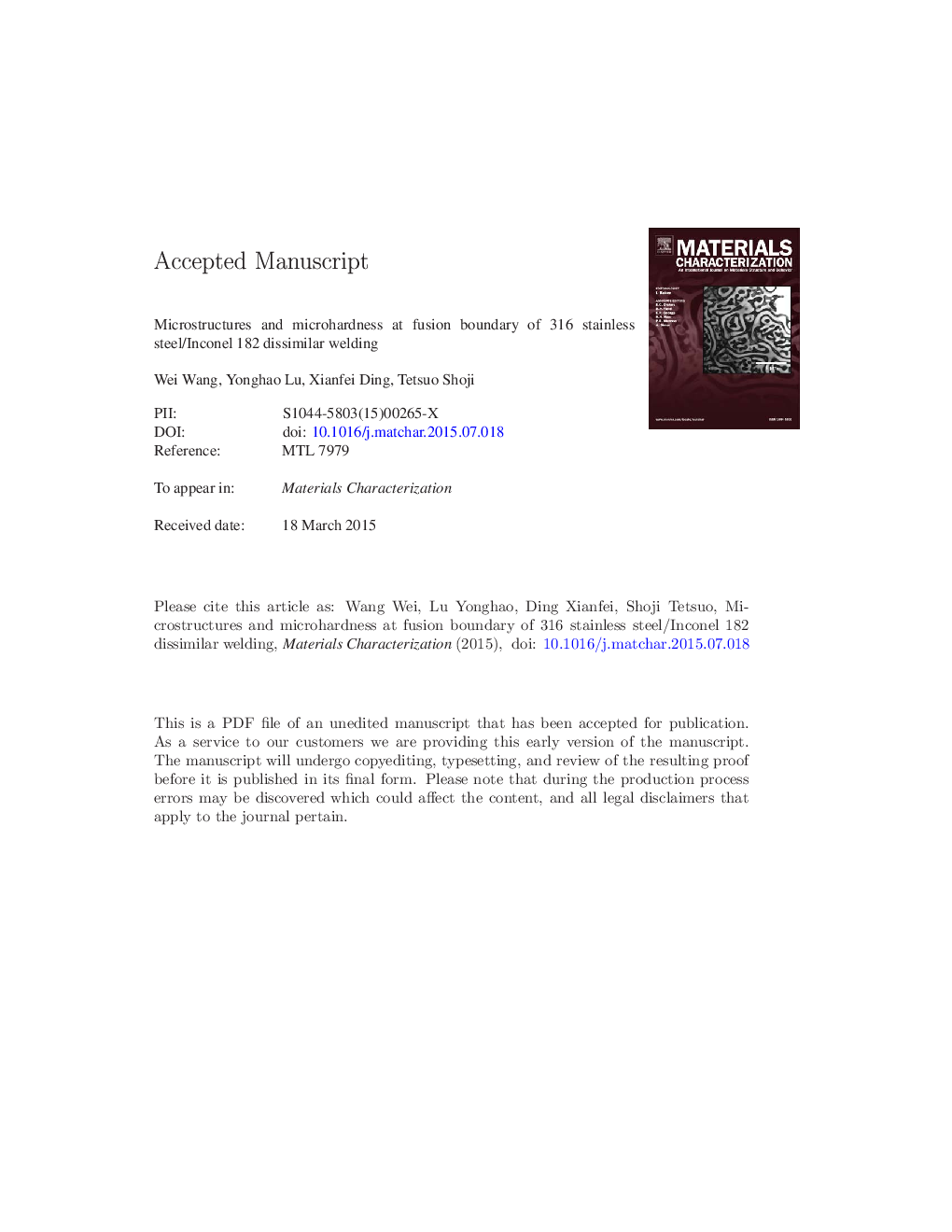| Article ID | Journal | Published Year | Pages | File Type |
|---|---|---|---|---|
| 7970193 | Materials Characterization | 2015 | 34 Pages |
Abstract
Microstructures and microhardness at fusion boundary of a weld joint were investigated in a 316 stainless steel/Inconel 182 dissimilar weldment. The results showed that there were two alternately distributed typical fusion boundaries, a narrow random boundary (possessed 15% in length) with a clear sharp interface and an epitaxial fusion one with (100)BM//(100)WM at the joint interface. The composition transition, microstructure and hardness across the fusion boundary strongly depended on the type of the fusion boundary. For the random boundary, there was a clear sharp interface and the composition transition with a width of 100 μm took place symmetrically across the grain boundary. For the epitaxial fusion one, however, there were Type-I and Type-II grain boundaries perpendicular and parallel to the epitaxial fusion boundary, respectively. The composition transition took place in the Inconel 182 weld side. Σ3 boundaries in the HAZ of 316SS side and Σ5 grain boundaries in weld metal were usually observed, despite the type of fusion boundary, however the former was much more in epitaxial fusion boundary. Microhardness was continuously decreased across the random fusion boundary from the side of Inconel 182 to 316SS, but a hardening phenomenon appeared in the epitaxial fusion boundary zone because of its fine cellular microstructure.
Related Topics
Physical Sciences and Engineering
Materials Science
Materials Science (General)
Authors
Wei Wang, Yonghao Lu, Xianfei Ding, Tetsuo Shoji,
